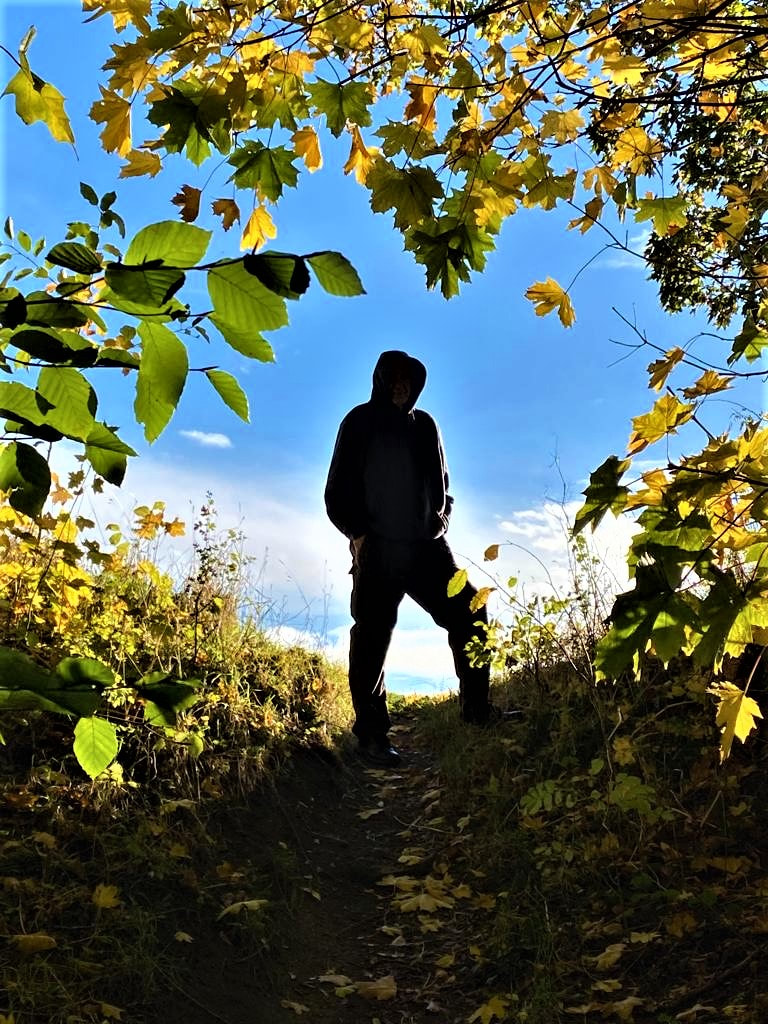|
‘There’s nothing more dangerous than a resourceful idiot.’ (Scott Adams) 15 minutes before I was due to lead an online change leadership workshop in Germany, I stepped outside briefly for a breath of fresh air. I wanted to clear my head, focus and pray. Then…oh no, I heard a gentle click behind me and discovered, to my alarm, that I couldn’t open the door without a key. It hung tantalisingly on the inside and I could see my mobile phone staring at me blankly from the table. Aha, I thought. I will ask my hosts to let me in. Oh, they were out. Mild feelings of panic rising, I rushed to a neighbour. Thank God they were in, could understand my Englisch-Deutsch, had the hosts’ number and could call. Now, with just 2 minutes to go, my host appeared and saved the day. It was a timely reminder that sudden change can come from anywhere, unexpectedly and often from left field. It was also a helpful reminder that leadership, resilience and agency aren’t simply inward, intra-personal qualities or strengths. Our ability to handle the impacts of changes and transitions often emerges from an outward-facing resourcefulness, looking outside of ourselves openly (and, for me, prayerfully) for people and-or other resources who can co-create and co-enable a solution with us…or – if no solution is possible – sit with us in the midst of discomfort, disappointment or pain.
14 Comments
'The optimism of the action is better than the pessimism of the thought.' (Greenpeace) Resilience is a common buzz word today, partly in response to the complex mental health challenges that individuals and communities face in a brittle, anxious, non-linear and incomprehensible (BANI) world. Who would have imagined 3 years ago, for instance, that Covid19 would strike or that Russia would invade Ukraine, with all the ramifications this has precipitated in our personal and collective lives? It can feel like too much time spent on the back foot, reacting to pressures that may appear from anywhere, without warning, from left field – rather than creating the positive future we hope for. A psychological, social and political risk is that people and societies develop a ‘Whatever’ attitude, an apathetic ‘What’s the point?’ mentality. After all, what is the point of investing our time, effort and other resources into something that could all get blown away again in a brief moment? A good friend worked in Liberia with a community that was trying to recover from the effects of a bloody civil war. They started to build schools, hospitals and other infrastructure and, just as things were beginning to look hopeful, a violent, armed militia swept through the area and burned everything to the ground. This can feel like an apocalyptic game of snakes and ladders. Take one step forward and, all of a sudden, back to square one again. A close friend in the Philippines befriended people in a very poor makeshift community, surviving at the side of a busy road in boxes and under tarpaulins. She worked hard to improve the quality of their lives, to ensure that they felt and experienced authentic love, care and support, and it started to have a dramatic human impact. Faces brightened and hopes were lifted. Then, out of nowhere, government trucks appeared and bulldozed that whole place to the ground. It could be tempting to give up. One coping mechanism is to focus on living just one moment, one day, at a time because, after all, 'Who can know what tomorrow will bring?' This may engender an element of peaceful acceptance, akin to that through mindfulness. It can also morph into a form of passive, deterministic fatalism: ‘We can’t change anything, so why try?’ Martin Luther King's response stands in stark contrast who, in the face of setbacks, advocated, ‘We’ve got to give ourselves to this struggle until the end. Nothing would more tragic than to stop at this point. We’ve got to see it through.’ Psychologically, both approaches could be regarded as survival strategies, as personal and social defences against anxiety. In a way, they are adaptive responses: ways of thinking, being and behaving that seek to create a greater sense of agency and control in the face of painful powerlessness. In the former case, a level of control is gained, paradoxically, through choosing to relinquish control. It's a letting-go rather than a clinging-on. In the latter, a fight-response (albeit a faith-fuelled, non-violent fight in the case of MLK), control is sought by changing the conditions that deprive of control. Each constitutes it's own way of responding to an external reality – and it’s out there as well as in here that the real and tangible challenges of resilience and transformation persist. The social, political and economic needs of the poorest, most vulnerable and oppressed people in the world don’t exist or disappear, depending simply on how we or they may perceive or feel about them. MLK’s call to action was radical: ‘We need to develop a kind of dangerous unselfishness. It’s no longer a question of what will happen to us if we get involved. It’s what will happen to them (and us) if we don’t?’ [See also: Resilient; When disaster strikes; Clash of realities] Last week felt like a perfect storm, an unexpected convergence of pressures from all directions that left me reeling. Betsy Kolkea describes it as like having the tail shot off a plane in mid-flight; a sudden loss of control that sets us spinning downward at terrifying speed. I’m reminded me of the dramatic plane-falling-from-the-sky scene in the film Knight & Day, where Cameron Diaz asks Tom Cruise anxiously, ‘Are we going down?’, to which he replies with a grin, ‘It’s just a rapid descent.’
In that satirical moment, the character played by Cruise actually models an important principle in a sudden crisis: create a pause, no matter how brief, to breathe, reflect, weigh up options (and, for me, pray) – then decide and act. I heard a similar idea in a video this week, about how to survive a parachute jump if the parachute doesn’t open. The most important thing is not to panic (yeah right!) and to use the moments available, no matter how brief, to breathe, focus, scan options and choose. This skill may indeed, of course, come a lot easier and more instinctively if we’ve had opportunity to practise and gain experience beforehand. There’s something about having already been through a challenge and survived, having been tested repeatedly under fire, that can develop a resilience and psychological adaptivity akin to muscle memory. It makes an auto-response possible in the midst of unexpected and extraordinary circumstances and, thereby, creates a vital moment-space to think. When have you gone into a tailspin? What have you done to recover from a surprise nosedive, a crisis that came from nowhere and hit you out of left field? What can you do to help others caught in free fall? 'Don't be still. One of the most common mistakes when change is upon us is to take enormous amounts to time to run analysis and come up with various routes to be followed. Sitting still in moving waters will only lead to a ship becoming adrift, with no indication of where it will end up or whether it will sink. If adjusting the course is needed, the leader should do it quickly and without hesitation.' (Raluca Cristescu)
The start of this new year has felt like a very rough ride for some people. I’ve been working alongside humanitarian disaster management experts in and from a wide range of countries, trying to make a difference for those who are poorest and most vulnerable in the world. In some places, wave after wave of devastating impacts have hit hard and fast, ranging from drought, crop failure and swarms of locusts to military conflict and deep civil unrest – all with the ongoing Covid-19 crisis overlaid on top. A close friend in the Philippines spent today with her children, praying earnestly and wrapping what few possessions they have in plastic bags in preparation for the roof of their fragile boarding house being torn off by an impending typhoon. Others I’ve been supporting have been grafting long hours, trying to help people and communities recover from the effects of war. The power fluctuates on and off, as does the wifi signal, making online communication difficult – yet I, we, they, persevere. My first direct experience of disaster response was some years ago during the Kosovo crisis. I travelled with a team across Spain, France, Italy and Albania to take emergency logistical supplies to refugee camps on the frontline border with Serbia. Our vehicles were fitted with spare tyres, satellite communications equipment and ballistic blankets in case we drove over land mines. I remember vividly the ‘No weapons on board’ symbols on our windows – signalling, I hoped, ‘Please don’t shoot us.’ We encountered challenge-after-challenge on route. At times, it felt as if everything was against us. As military helicopters flew overhead in impressive formation, we meanwhile were often stuck firmly on the ground, mired in red tape or the insidious effects of blatant corruption. It was a rapid learning experience for me, seeing how my seasoned disaster response colleagues handled this. It was my first exposure to adaptive leadership in a crisis too – out in the field, not inside an organisation. It went something like this: 1. Hold tightly to your goals and values but loosely to your plans. If you expect everything to go smoothly, you will get disheartened and frustrated. 2. Treat every roadblock as a new reality. It’s not the end of the road, it’s another challenge to navigate. 3. Think quickly and tactically. Lateral thinking will prove more useful than strategic planning. 4. When faced with an obstacle, take a decision and act. Don't stop, keep moving. 5. Pray – God can do more than you can do. This kind of activist-pragmatist outlook, behaviour and stance draws on and develops creativity, innovation, resourcefulness and resilience. It’s a way in which the poorest and most vulnerable people and communities learn to survive and thrive too. When a life situation is too painful, turbulent or dynamically-complex to understand, predict or control, a focus on the here-and-now can be the most meaningful choice. Even small steps can engender and evoke a real sense of agency, hope and change. My work now includes coaching, mentoring, facilitating and training of humanitarian field workers in action learning: a here-and-now, real-time methodology to stimulate adaptive leadership and learning in the midst of action. It’s an experimental pilot initiative with a global network of humanitarian non-governmental organisations (NGOs) and a team of action learning specialists. When have you developed or used adaptive leadership in a crisis? How did you do it? What difference did it make? 'Vulnerability + Hazard = Disaster.’ (Steve Penny) It’s one thing to conceptualise it. It’s quite another thing to feel it, to experience it, to know it for real. Marcus Oxley, international disaster response expert, comments with insight that at moments when crisis hits, all vulnerabilities that pre-existed, yet lay out of view, come into sharp relief. It’s like a lightning flash in the darkness of night that, suddenly and just for a moment, reveals starkly what’s already there: e.g. political systems, public services, infrastructure, corruption, technology, security etc. Yet crisis can also reveal and evoke extraordinary awareness, resourcefulness and resilience. Shona Adams, a clinical psychology expert, observed astutely that people often don’t know what’s possible, or what they and others are truly capable of, until they are in a crisis. There’s only so much we can imagine, anticipate and prepare for in advance. People sometimes discover surprising strength, support and spirit and fresh possibilities emerge, as if by magic, that lay hidden or untapped before. So, here are some tips for leaders, coaches, OD and HR that feel especially pertinent in the midst of the Coronacrisis: 1. What vulnerabilities have emerged that were already there, yet your client now sees more visibly and has energy to address? 2. What has stayed strong or not broken in the face of crisis? (e.g. ‘If your client rates his or her resilience as 2 out of 5, what has stopped it becoming a 1?’). 3. What new opportunities can you and the client see and create: to be, become or do something new? Can I help you think through steps 1-3 in your work? Get in touch! info@nick-wright.com Well-being and resilience are hot topics in the world of work at the moment. The Stockdale Paradox offers a useful psychological outlook and stance. How do you handle faith, facts and hope? ‘Retain faith that you will prevail in the end, regardless of the difficulties and, at the same time, confront the most brutal facts of your current reality, whatever they may be.’ (Stockdale Paradox) Someone commented recently on my ‘relentless optimism that everything will work out in the end.’ They saw this as a principle that guides my decision making, drawing on my faith as a follower of Jesus. I was a bit taken aback, partly because I had read in Jim Collins’ book, Good to Great some years ago that optimism can lead to naïve passivity in the face of challenge. On further exploration, it became clear that they meant I appear un-phased by some situations that could leave other people shaking. It’s as if I am open to, look out for, the possibility in, the opportunity in, what is. Sometimes. This is quite different to a kind of positive thinking that says things like, ‘You can be whatever you want to be’, as if personal, cultural and contextual constraints don’t exist, or, ‘Don’t worry, you’ll be fine’ – when clearly you won’t be. Collins talks about the importance of confronting the brutal facts; that is, of actively seeking out and facing what could well look and feel like the opposite to how we would prefer things to be. In contrast to optimism or pessimism, it’s a kind of relentless realism. It demands honesty, courage, humility, and a hopeful outlook to avoid falling into paralysis or despair. Achieving this perspective, attitude and stance isn’t always as easy, however, as it may sound. Psychodynamically-speaking, leaders, teams and organisations often develop subconscious and highly-effective defence mechanisms that protect them from dealing with issues that could feel threatening or anxiety-provoking. As a consequence, it can mean that we see what we want to see, hear what we want to hear and filter everything else out – without even knowing it. This may create both risky blind spots (what we can’t see) and dangerous hot spots (what we avoid facing). To add to the complexity, according to Gestalt and social constructionist research, leaders, teams and organisations can become so focused-fixated on specific issues they consider most important that they inadvertently exclude wider perspectives or dimensions – again without realising it. This influences what they perceive as key, what they consider to be the brutal facts in relation to it, what they believe the options are and, therefore, what they decide to do in response to it. It’s as if the narratives we create function for us as as-if realities. How do you handle faith, facts and hope? How can I help you build well-being and resilience? Get in touch! Accidents happen. How do you respond to incidents that knock your carefully-made plans sideways? I felt a bit nervous as I entered the office and, then, decidedly embarrassed as I accidentally tipped a hot cup of tea down my smart white shirt. The client looked bemused, as if trying to stifle a smile, before racing out of the room to return with a bright yellow t-shirt. Kind man. Not to be out-done by this, my brother went to a formal, tense business meeting with a client. As he approached their office, a car mounted the pavement and hit him, sending him flying into a wet, muddy gutter. His case burst open and his papers went everywhere. It almost broke his thigh but it also broke the ice. It’s funny how, sometimes, when things go wrong – paradoxically – it makes things go right. In both cases, what felt like a complete disaster in the moment turned out to be the very thing that enabled a different type of contact, a positive bridge of human empathy and relationship and a better outcome. An emotional experience of humour or relief melted the rational, technical barriers that could otherwise have proved more difficult to navigate. Yet how many of us would welcome such ‘accidents’ when they arise, or see only how they wreck our plans, expectations or delicate egos? It calls for a different kind of awareness, expectation and stance in the world. It means being open to possibilities, opportunities and potential in whatever happens. It’s far less about being planned and more about being prepared. It’s consistent with Professor Richard Wiseman’s view of what makes some people (apparently) ‘luckier’ than others (https://www.bbc.co.uk/programmes/p06t5w4d). In coaching, we call this developing a client’s resource-fulness. Often, it entails enabling a person to approach the world, work and relationships with open hands, mind and heart; faith, hope and love. So – how do you respond to serendipitous ‘accidents’? How do you build clients’ resourcefulness? How can I help you to be more resourceful? Get in touch! info@nick-wright.com ‘The problem is, we are protecting people when we should be preparing them.’ (Carole Pemberton) How to weather a storm. Resilience has become a buzz word in organisations today, linked with well-being, positive risk, agility, adaptivity and sustainability. As an individual-personal level, the imperative is being driven by a growing awareness of and concern about mental health issues, experiences, influences and impacts, including in the workplace. At a wider organisational level, factors include ever-more complex global dynamics and a seemingly relentless need for change. All in all, it can feel like a perfect storm – leaving leaders, managers, people professionals and staff alike feeling perplexed and exhausted. I worked recently with a forward-thinking public sector organisation in the UK. It was and is working through a merger with two sister organisations and recognised the criticality of building resilience by preparing leaders, staff and teams psychologically in advance for the transitions that this would entail; as well as to manage the practical change process itself effectively. I will share insights and ideas here that participants said they found most useful. We framed the experience as moving from an until-now-known reality to a not-yet-known future reality, through what sometimes may look-feel like a messy place in the middle. 1. Scary voids. In the absence of knowing exactly what a change and new future may hold, some people will fill the interim void with anxiety; others with hope. It’s normal – and partly influenced by what each person has experienced in the past. Hold your nerve. Reach out if you – or others – need help. 2. Small things are big things. In the midst of change and transition, the most insignificant of decisions and actions can take on great symbolic significance – positively or negatively. Don’t be surprised if this happens. Ask each other what small thing(s) would make the biggest positive difference – then, if possible, do it. 3. Mind games. People, teams and organisations construct narratives that help them make sense of their experience. Pay careful attention to the stories that you and other people tell yourselves – and each other – on route. Change the narrative: change the experience. 4. Rollercoasters. Transitions can feel like a bumpy ride, often feeling more like a ‘snakes and ladders’ game than a smooth change curve. Be patient, flexible and forgiving. One step at a time. 5. Building blocks. Reflect and help others reflect on life-work changes that have worked out well in the past – and how. Engender resourcefulness. Inspire hope. How do you develop personal, team and organisational resilience? Can I help you develop greater resilience? Get in touch! info@nick-wright.com ‘How to develop a thick skin at work without being obnoxious.’ (Experteer) The article title made me smile. We often think of people with thick skin as tough, resilient and, at times, insensitive to others. It’s as if thick-skinned people are able to handle high levels of relational tension or conflict without feeling hurt or bruised. A similar personal-relational metaphor we sometimes hear is Teflon. If you are unfamiliar with it, Teflon is a material with ‘an extremely low coefficient of friction’ (Urban Dictionary). If something is coated with Teflon, stuff doesn’t stick to it. Tensions and conflict simply slide off, leaving a Teflon person unaffected by relational stress. Whilst thick-skinned or Teflon people may be insensitive to criticism or insults, other people may be overly-sensitive, feeling hurt by relational tension or allowing conflict to penetrate into their soul. A pastoral friend, Nikki Eastwood, uses a blotting paper metaphor to characterise this. If you are unfamiliar with it, blotting paper is an absorbent material, used to soak up excess ink when writing with a traditional ink pen. If we allow ourselves to absorb all the hurt, pain, frustrations etc. of other people, including that projected onto us, we can become debilitated, stressed and exhausted. I worked for most of my life in human rights work and international non-governmental organisations (NGOs). Faced, at times, with unspeakable suffering of others, I became very run down. Eventually, I spoke with an insightful therapist, Shona Adams, who challenged my risk of over-empathising. In my desire to feel and communicate genuine contact with others, I learned that sometimes I stepped so far into others’ shoes that I stepped out of my own. It was as if I was experiencing others’ traumas vicariously, yet without the resilience that people in such situations often develop or discover. So, what can we do to build healthy, constructive relationships that are neither too Teflon to the point of insensitive arrogance on the one hand or too over-empathetic to the point of unhealthy confluence on the other? How can we develop emotional intelligence and resilience? Firstly, listen actively for expressed and unexpressed feelings of others. If you’re unaware or unsure, be curious and inquire. Secondly, establish and maintain a clear psychological boundary and relationship between your experiences and those of others. It may be about you but it’s not only about you. If you would like help with creating and sustaining healthy, inspiring and effective relationships at work, get in touch! info@nick-wright.com Two years ago, I came off a mountain bike – badly(!) - during a UK Sport Relief charity ride. I demonstrated perfectly how not to fall, how not to land and, as a consequence, snapped my left leg sideways at the knee and ruptured two ligaments. During the next twelve months of leg splints, crutches and intensive physiotherapy, specialists told me I would never be able to walk up and down stairs again, never be able to swim again, never be able to ride off road again.
It was a shocking, painful and numbing experience. I kept playing over in my mind what had happened, what I could have done differently, what this could all mean for my life, how it could impact on my family and work. I felt angry with myself for making such a simple, stupid mistake, frustrated that I could no longer do activities I loved. And I realised I faced a choice. I could give in to the experience, accept my ‘fate’, or take what action I could to re-shape the future. Two years on, after months of (at times) agonising physio, dragging myself up stairs by hand rails etc, I managed to reach the top of a mountain without leg splints. Two years on, having learned to use a pull buoy float and hand paddles, I managed to swim 80 lengths with arms only. Two years on, with leg braced and lots of deep breaths, I managed to complete a 22 mile off road bike challenge. It has shed revealing light onto my attitude to risk. A reminder to hold onto hope. I thank God, family, friends, colleagues, professionals, neighbours - and even total strangers - who have supported me. It has influenced my thinking as a leader, coach and OD practitioner: how to support, challenge and increase the resource-fullness of people, teams and organisations. It has strengthened my conviction that we and others are often capable of far more than we know or believe. It has reinforced my faith that God stands with us in the midst of trials. |
Nick WrightI'm a psychological coach, trainer and OD consultant. Curious to discover how can I help you? Get in touch! Like what you read? Simply enter your email address below to receive regular blog updates!
|












 RSS Feed
RSS Feed